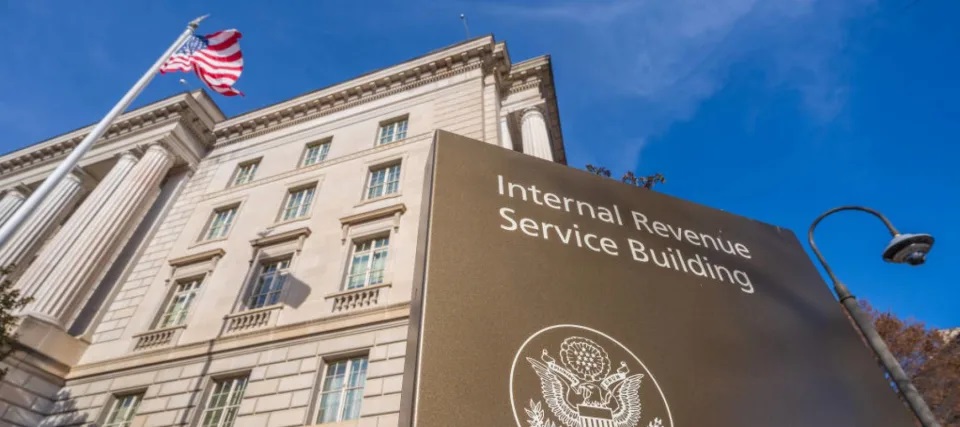The Internal Revenue Service (IRS) has issued a groundbreaking ruling allowing an undisclosed company to offer its employees the flexibility to allocate part of their employer's match towards student debt repayments or health reimbursement accounts.
IRS Ruling on 401(k) Company Matches: Shaping Americans’ Financial Choices


IRS Ruling on 401(k) Company Matches: Shaping Americans’ Financial Choices
Recently, the Internal Revenue Service (IRS) issued a ruling that could revolutionize how Americans utilize their 401(k) contributions. An undisclosed company has been granted permission to allow its employees to allocate a portion of their employer's match toward student debt repayments or health reimbursement accounts, in addition to the traditional 401(k) plan they are accustomed to.
The groundbreaking ruling, commonly known as a private letter ruling, granted this unique flexibility to the company, enabling employees to make personalized decisions on fund allocation at the onset of each fiscal year. If an employee fails to make a selection, the funds will be automatically channeled into their retirement account.
While this ruling is currently limited to the unnamed company that had sought approval from the IRS for this modification, it is viewed by many as a test case that could potentially pave the way for broader adoption by other businesses. This initiative holds substantial implications for American workers, allowing them the flexibility to direct their funds towards specific financial objectives beyond retirement savings. However, the implications of this novel approach raise critical questions about its feasibility and desirability.
Unleashing the Potential of Flexible 401(k) Matching
Extending the IRS ruling to encompass a wider array of companies could be a game-changer with manifold benefits for both employers and employees. By offering this unique provision, businesses could gain a competitive edge in the talent acquisition arena, effectively addressing employees' pressing financial concerns beyond retirement planning. Individuals stand to gain, as the option to divert matching contributions toward areas like debt repayment could provide additional support across diverse aspects of their financial well-being.
Remarkably, approximately 22% of employees currently do not maximize their full employer match on 401(k) plans, potentially forfeiting valuable incentives due to financial constraints. The newfound flexibility would empower these individuals to leverage matching contributions in tackling medical bills or educational debts, thereby unlocking additional resources that may expedite debt settlement and create pathways for bolstered retirement savings in the future.
Even those employees who are already maximizing their match might find it advantageous to temporarily prioritize clearing student loans or medical debts over traditional retirement contributions. This flexibility would enable employers and employees alike to realign financial priorities in a manner that resonates with their current circumstances and overarching objectives.
Navigating the Risks of Deviating Contributions from Retirement Planning
As with any transformative shift, there are inherent risks and downsides associated with channeling 401(k) contributions towards non-retirement avenues. One glaring drawback of this approach is the potential loss of the compounding effect, wherein asset earnings are reinvested to generate compounded returns over an extended period. By diverting contributions away from retirement, individuals may inadvertently compromise their long-term financial security and impede wealth accumulation.
Notably, a significant portion of Americans already grapple with inadequate retirement savings, highlighting the precarious financial position that many individuals face. Data from the Federal Reserve underscores the grim reality that a substantial proportion of households, particularly those within the 55-65 age cohort, possess meager retirement savings that fall short of ensuring a comfortable post-retirement life. Additionally, alarming statistics reveal that a considerable percentage of Americans, including retirees, have failed to set aside any funds for retirement, accentuating the urgent need for robust retirement planning strategies.
Furthermore, the allure of swiftly eliminating monthly debts like student loans or medical expenses may prompt individuals to prioritize debt clearance over long-term retirement planning. While the former may offer immediate relief from financial obligations, it could potentially overshadow the superior returns that retirement investments offer over time, coupled with the tax benefits associated with certain types of debt repayment.
Should an increasing number of companies adopt this innovative matching system, employees are advised to exercise prudence and deliberate thought before redirecting funds away from retirement savings. Unless the burden of debt poses a substantial financial challenge, adhering to conventional retirement saving mechanisms may prove more advantageous in the long run.
Conclusion
The contemporary development in 401(k) matching, as sanctioned by the IRS, underscores a transformative shift in employer-based retirement benefits, ushering in a novel era of enhanced flexibility and financial empowerment for American workers. While the unconventional approach holds promise in addressing immediate financial concerns and fostering greater autonomy in fund allocation, individuals must carefully weigh the implications and trade-offs to make informed decisions that align with their long-term financial aspirations.
It is essential for employees to assess their unique financial circumstances, evaluate the impact of diverting contributions from retirement, and seek professional guidance to navigate the complexities of financial planning effectively. By exercising diligence and foresight, individuals can leverage this newfound flexibility to optimize their financial well-being and secure a stable financial future in the face of evolving retirement paradigms.

 বাংলা
বাংলা  Spanish
Spanish  Arabic
Arabic  French
French  Chinese
Chinese 